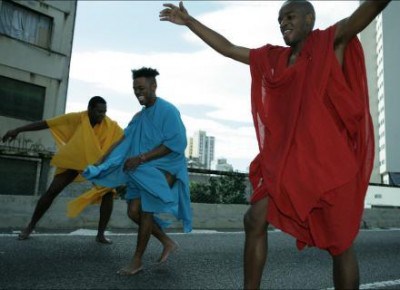
“If people can dance to the music of revolt rather than begin to revolt, they will dance.” -Burning the Cassette
Several people have sent me images from the recent uprising in Egypt, but it wasn’t until AFQOTP emailed me that I realized that aside from the fact that in general this feels like the most significant rebellion of our times, in terms of my little slice of anarchist fashion it completely changes everything. I’ve written plenty on how detrimental the black bloc is to creating a genuine revolt, but the very absence of any uniformity in this rebellion should finally put this issue to rest. All of the pictures coming out of Egypt depict a mass improvisation in terms of fashion, protective gear, anonymity and demonstrations of solidarity. In this sense we can decisively see that concerns for a political uniform (such as the black bloc or the indie militant) are completely disconnected from actually bringing down a government. To rephrase the Burning the Cassette quote:
If people can wear the fashion of revolt rather than begin to revolt, they will wear the fashion.


People are saying that this rebellion is the result of twitter and facebook networking, which is not accurate. Marc Herbst off handedly questioned if the fact that the internet was shut down proves it’s redundancy, and I think he hits the nail on the head. Yes these protests happened because of networking, but networking based on plain old knowing a lot of people, finding resonance and collectively acting. Yes, at times that took the form of videos on youtube, twitter or facebook, but when that was shut down, the protests still happened. Radicals have the unfortunate tendency of focussing on what “radical” looks and sounds like, and in doing so they miss the big picture.


I recently heard the artist Charles Gains speak and he suggested that we need an aesthetics that pushes politics beyond our imagination, that instead of relying on activist slogans to determine radicality instead we should allow for an open ended, complex and fully realized subject and make work accordingly. One of his projects was to take manifestos from the Black Panthers, Zapatistas, Situationists and the Socialist Congress and convert them to music, in the form of a string quartet. He described this as an attempt to move away from metaphor to metonymy, where metaphor depends on comparing the likeness of two elements and metonymy as the association of completely autonomous and fully separate elements. In this way he’s placing a manifesto next to a piece of music and allowing us to form our own associations and meanings from the proximity of these two things rather than through their similarities. I would consider this approach to be the beginnings of imagining an aesthetic commons versus creating new aesthetic movements. This aesthetic commons would value the absence of uniformity and directives above new forms of rituals and language. In terms of music, this could start by critiquing the format of the punk show as an attempt to privilege one aesthetic language over everything else and instead demanding our shows have an absence of any unified music taste or cultural meaning. To take it a step further, we can question the very act of forming a band and promoting a new set of constructed rituals and aesthetic language and instead imagine a party like the one Madi/Fat Stick threw in Pittsburgh called the Hat Band where everyone had to play a new instrument and automatically form a new band with people they’ve never played with before.


In terms of anarchist fashion and an aesthetic commons, it should be obvious that what we need is more improvisation. On the one hand we need to be creating makeshift helmets from detritus that we find on the street and accessorizing with stolen riot cop shields and on the other hand this spirit should seep into all of our sartorial choices, grabbing whatever we can to get the job done; gold chains, fake nails, pantyhose masks, fake mustaches, insensible heels, gold spikes, plunging necklines, granny chic, hot pants, elegant silhouettes, fishnets, mean ass broaches, stiletto weapons, colors as pure sensation, business casual, bad haircuts, shoulder pads, and at times simplicity for simplicity’s sake.




























